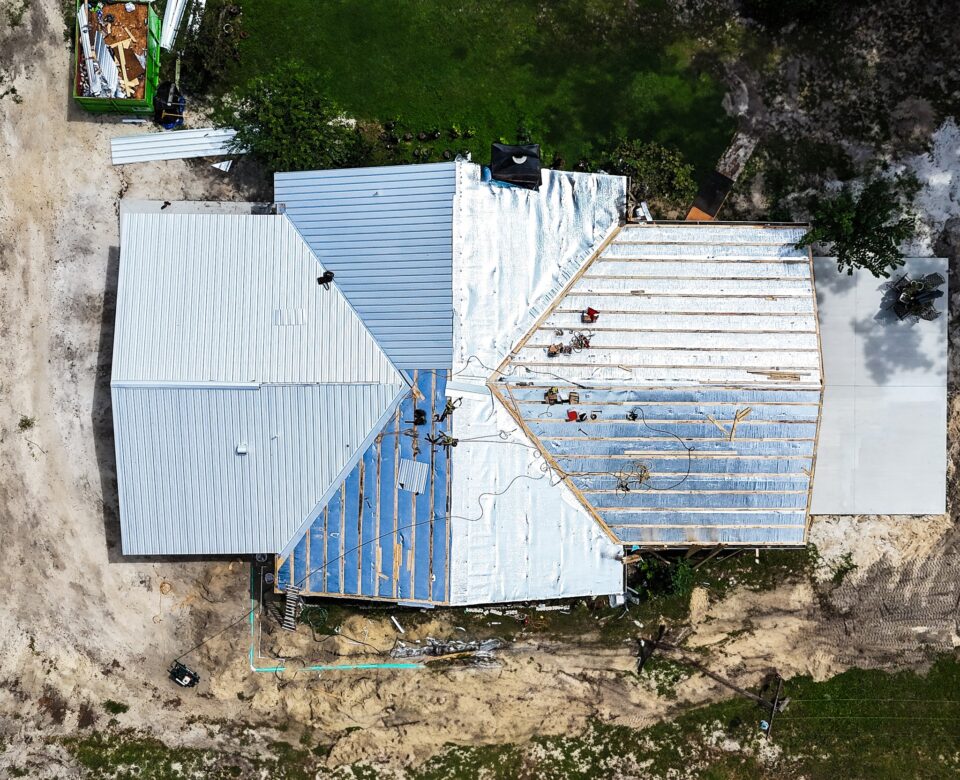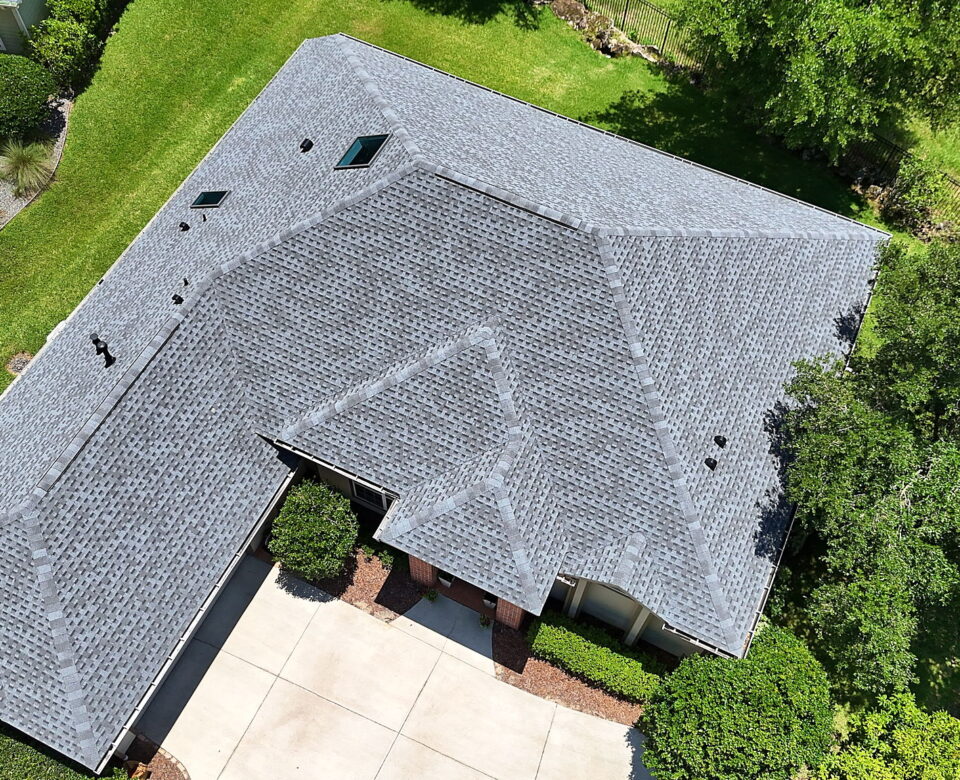
Stay Cozy! Schedule Your Roof Inspection Before Winter
September 5, 2025
Whether you’re a longtime Gainesville homeowner or you just moved into your first place, it’s easy to overlook your roof until a problem pops up. But taking charge of a fall roof repair checklist can make a big difference in protecting your home from rough winter weather. Think of this list as your friendly guide to spotting issues early, keeping your roof healthy, and facing the cooler season with confidence.
You might be wondering why fall is such an important season for roof maintenance. In Gainesville, Florida, the autumn months bring milder temperatures and, sometimes, bouts of heavy rain. Plus, any needed repairs completed before winter arrives mean you’ll be prepared for cooler nights or unexpected storms. So let’s dive into the key steps that will help you keep your roof in great shape.
Review your fall roof repair checklist

Before you climb a ladder or even step outside, it helps to know what you’re looking for. A roof repair checklist reminds you to check certain spots, note which areas need immediate action, and plan for larger projects. At a glance, your checklist might seem overwhelming, but breaking it down into manageable tasks ensures nothing gets missed.
A handy fall roof repair checklist usually includes:
-
Looking for missing or curling shingles
-
Checking the gutters for leaves, twigs, or standing water
-
Inspecting attic insulation and ventilation
-
Spotting any potential moisture or leak issues
-
Scheduling professional help if you see serious signs of damage
By following a written list, you’ll have a better chance of catching small problems before they become big headaches. It’s like having a grocery list to make sure you don’t forget the eggs, milk, or, in this case, a few cracked shingles.
Spot signs of wear
You don’t have to lug a ladder around every inch of your property to start your inspection. Sometimes, you can tell a lot just by stepping outside, looking up, and strolling around the perimeter, especially if you’re in a single-story home.
Here’s what you can catch from ground level:
-
Curling or buckling shingles – These form wavy edges that can lift during strong winds.
-
Patches of missing shingles – Gaps on your roof’s surface leave it vulnerable to leaks.
-
Granule loss – Shingles shed mineral granules through normal wear, but seeing large bald spots may mean the shingles need replacing.
If you notice exposed underlayment, large dark patches, or significant worn areas, it might be time to climb further for a closer look. Or you can call in an expert for a thorough roof inspection before winter. Even in Gainesville’s milder climate, missing shingles leave your home unprotected against heavy rainfall and chilly breezes.
Clean gutters for safety
Once you’ve scanned your shingles, move on to your gutters. They might look harmless, but clogged gutters can lead to serious water damage, especially when leaves and pine needles pile up throughout autumn. Even in Gainesville, you’re likely to see leaves drifting around your yard this time of year.
Regularly cleaning out your gutters does two big favors:
-
It prevents water from backing up under your shingles.
-
It stops debris from creating a soggy mess around your foundation.
Grab a pair of gloves and remove obvious clumps of leaves. You can use a small plastic scoop to shovel out stubborn debris. It’s also a good idea to flush your gutters with a garden hose once you’ve cleared away the bulk. Watch for slow drainage or leaks in the seams. If you spot more serious damage, a professional consultation can tell you whether you need repairs or a complete gutter replacement.
Quick gutter tips
-
Scoop out debris regularly in fall months.
-
Check downspouts to ensure water flows freely.
-
Tighten loose gutter brackets so they don’t sag under weight.
-
Consider gutter guards if leaves constantly clog your system.
When water can’t drain properly, you risk damage not only to your roof but also to your siding and landscaping. That’s why addressing gutters is one of the most important fall roof maintenance tips you can use each year.
Inspect attic and ventilation
Did you know that roof health starts from the inside? Head to your attic and take a peek around. Look for any signs of moisture, like damp insulation or discoloration on the wooden beams. Proper ventilation also helps keep your roof in good shape year-round, since trapped heat and moisture can warp decking and cause shingles to deteriorate faster.
Ask yourself:
-
Is the attic overly warm or stuffy?
-
Does the insulation feel dry to the touch?
-
Are any vents blocked by dust, boxes, or blankets?
If your attic is poorly ventilated, warm, moist air can’t escape, leading to mildew or mold growth. You might also see damage to the underside of your roof, including cracked rafters. Fortunately, addressing ventilation issues can be done relatively quickly by installing additional vents, repositioning insulation, or clearing blocked openings. Keeping your attic ventilated will save you from surprise repairs and help your HVAC system run more efficiently.
Stay alert for leaks
No homeowner wants to deal with leaks, but spotting them early can save money and frustration. Gainesville’s rainfall might not be constant in autumn, but when it does come, it can come fast. By keeping an eye out for wet spots or drips now, you’ll prevent mold growth and structural problems when colder weather hits.
Common leak red flags
-
Ceiling stains or yellowish discoloration
-
Damp patches on walls or floors
-
A musty odor lingering in the attic or on upper floors
-
Rotting or water-stained wood around vents or chimneys
Sometimes a leak sets in slowly, which makes it tricky to catch. One quick test is to gently pour water from a bucket in suspected areas, then have a partner inside the attic watch for drips. If you do see water trickling through, it’s time to seal that area or replace damaged shingles. For major leaks, you might consider professional help or even an in-depth preparing roof for winter plan.
Here’s a simple table summarizing common leak causes and their potential fixes:
|
Possible Cause |
Likely Culprit |
Quick Fix |
|---|---|---|
|
Damaged flashing |
Rust, cracks around chimneys/vents |
Reseal or replace |
|
Missing shingles |
Severe storm or old age |
Patch or replace |
|
Clogged gutters |
Debris build-up |
Clean and unclog |
|
Worn sealant |
Extreme sun or aging |
Strip and reseal |
Keep this table in mind as you tackle your fall roofing checklist. It’s a handy reference whenever you suspect a leak or water intrusion around your home.
Prepare for winter repairs
While Gainesville, Florida, doesn’t typically experience harsh, snowy winters like northern states, it’s still smart to address serious issues in advance. Fall is usually drier and cooler, which makes roof work more comfortable and straightforward. Waiting until late December or January might leave you in a bind if temperatures drop or storms pick up.
Here’s what to prioritize as you prepare for winter:
-
Repair or replace damaged shingles: Shingles protect your roof’s underlayment from moisture, so swap out any missing or curled ones.
-
Fix weak spots: Reinforce loose flashing around chimneys, vents, or skylights.
-
Check underlayment condition: If you’ve had leaks, ensure the underlayment (material beneath shingles) is in good shape.
-
Upgrade ventilation: Improve airflow in or around the attic so moisture doesn’t linger.
If you’re not comfortable taking on large repairs yourself, don’t stress. You can always reach out for expert support. A bonded and insured contractor can handle more complex tasks, leaving you free to focus on smaller DIY projects like cleaning gutters or touching up sealants.
Follow up with professionals
Even if you’ve walked through each task on your fall roof repair checklist, there is a point where calling in a pro is the safer, more efficient choice. Structural damage, big leaks, or an aging roof might require deeper inspection. Also, local professionals understand Gainesville’s climate and can offer targeted strategies for keeping your home dry and well-insulated.
If you want help from a trusted local team, True Force Roofing Gainesville FL is a name you can look into. They’re familiar with the unique challenges that come from Florida’s mix of sunshine, rain, and high humidity. Whether it’s a minor fix or a full replacement, professional crews can plan the job, secure the right materials, and schedule the work before winter’s cooler nights arrive.
Why professional help matters
-
Safety: Licensed teams have the right equipment and skills for inspecting high or steep roofs.
-
Efficiency: Quick turnarounds mean you avoid lingering issues that can worsen later.
-
Expertise: Knowledgeable pros spot smaller signs of roof damage you might miss.
-
Peace of mind: Warranties or guarantees let you rest easier, knowing quality materials were used.
Working closely with qualified roofers allows you to protect your investment for years to come. Plus, you’ll free up your own time for other fall projects or simply enjoying Gainesville’s mild autumn weather.
Tips for Gainesville homeowners
Living in Gainesville means you’ve likely seen a variety of weather patterns—hot summers, the occasional storm, and pleasant fall stretches. While this climate might sound roof-friendly, Florida humidity can speed up algae growth, and storms can weaken shingle edges. Staying on top of routine maintenance pays off in the long run.
Here are a few extra tips tailored for Gainesville’s conditions:
-
Trim nearby trees: Branches rubbing against shingles can cause damage, and falling leaves can clog gutters.
-
Look for algae streaks: Warm, moist climates encourage algae that breaks down shingles faster. Consider regular roof cleaning to remove it.
-
Schedule a seasonal checkup: If possible, book professional inspections twice a year, including a roof inspection before winter.
-
Keep a maintenance calendar: Mark essential tasks each month so you’re not caught off-guard.
Keeping an eye on Gainesville’s forecast also helps you avoid scheduling big repairs right before a heavy rain. Aim for drier windows, which reduce the risk of water damage if your repairs take more than a day.
Protect your roof this fall
When you have a working, reliable roof, you can focus on the cozier side of the season. Imagine enjoying warm indoor meals, hosting friends, or simply kicking back without worrying about leaks overhead. By checking for damage, cleaning gutters, and addressing minor concerns right away, you’ll stay ahead of most maintenance problems.
Here’s a quick recap of the main steps:
-
Begin with a clear fall roof repair checklist to organize tasks.
-
Walk around your home to spot shingle damage or areas of concern.
-
Clean gutters and downspouts to prevent water backup.
-
Inspect your attic for signs of moisture or poor airflow.
-
Stay alert for leaks by looking for stains or musty odors.
-
Plan any repairs before cooler weather arrives.
-
Reach out for professional help, especially if you see major issues.
As an additional resource, check out our fall roof maintenance tips for a deeper dive into keeping your roof in shape. You can also read about preparing roof for winter if you want a seasonal to-do list that goes beyond roofing.
Keep the chill out
Fall in Gainesville may not be as frosty as in other regions, but chilly evenings and sudden rainstorms can still reveal roof flaws. Following a structured list and fixing smaller issues immediately gives you peace of mind when winter does roll in. You don’t need a massive budget or complicated tools—just a bit of know-how and a willingness to inspect your roof regularly.
If you’re feeling unsure or overwhelmed at any point, remember that professional help is out there. It’s often safer and more cost-effective to hire a licensed crew than risk injury or bigger damage by attempting a difficult repair on your own. Start small by replacing a few curled shingles or unclogging your gutters. Then, if anything seems outside your comfort zone, do yourself a favor and bring in an expert for that extra layer of protection.
Tending to your roof is a big part of overall home maintenance, especially in the transition from fall to winter. By reviewing your fall roof repair checklist, spotting warning signs early, and calling in help when needed, you’re making sure the only thing falling on your roof is a leaf—never costly repairs or nasty surprises when the cold winds blow. Enjoy your home this season, and rest easy knowing you’ve covered the basics to keep it safe, warm, and leak-free.



